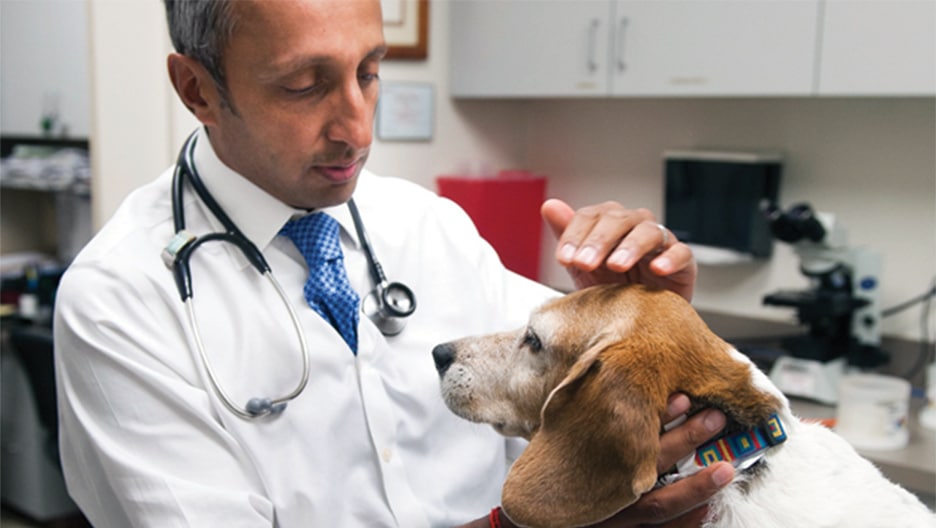“We are on a mission to solve the unmet needs of patients — both human and animal patients — who have complex medical problems like cancer.”
— Chand Khanna, DVM, PhD
Dogs may be more than just “man’s best friend.” They may hold the answer to treating a devastating pediatric and adolescent bone cancer — osteosarcoma.
Osteosarcoma is 10 times more common in dogs than it is in humans, allowing research in canine osteosarcoma to advance rapidly. Bone cancer in dogs also bears many similarities to human osteosarcoma, making it ideal for translational research.
Chand Khanna, DVM, PhD, a veterinary oncologist and renowned researcher in the field of osteosarcoma, is hoping to glean valuable insight into how osteosarcoma works and how to cure it. He does this by studying osteosarcoma in dogs and translating that information to help human patients. He says, “We are on a mission to solve the unmet needs of patients — both human and animal patients — who have complex medical problems like cancer.”
Dr. Khanna is chair of the Osteosarcoma Institute’s Strategic Advisory Board, chief science officer of Ethos Veterinary Health and president of Ethos Discovery, its incubator of scientific innovation. We spoke with Dr. Khanna about what we can learn from his research in canine osteosarcoma.

What makes this research so groundbreaking?
The fact that osteosarcoma in dogs and human patients is so similar is a fascinating discovery. It offers a unique opportunity to answer questions about the development of drugs that cannot be answered in human clinical trials.
How is osteosarcoma similar in dogs and humans?
There are many similarities. The most significant is where osteosarcoma occurs in the body. In dogs and humans, these tumors typically occur in the longer bones where cells are rapidly dividing. This area is called the growth plate.
Another important similarity is how osteosarcoma metastasizes. In both dogs and humans, osteosarcoma is prone to spread to the lungs. What makes these cancer cells sprint to other organs of the body? We are still not sure, but it offers a chance to understand its strengths as well as its weaknesses.
How is osteosarcoma different in dogs than in humans?
There is really only one main difference, and that is the age of onset. In humans, it occurs when a young child is growing. In dogs, it occurs in large breed dogs that are in their older years.
Everything else — from what it looks like at the gene level and how it behaves clinically (the spread from the bone to the lung) — are all identical between dogs and humans. That is pretty striking.
How is OSI supporting this research?
The OSI is currently funding a research study in dogs at the University of Minnesota. They have an interesting approach to harness the power of the immune system. The study assesses whether cutting-edge techniques to enhance the efficiency of the body’s immune system against osteosarcoma, in combination with radiation therapy, have the potential to treat human osteosarcoma patients safely and effectively.
Why is this research so important to you?
I am a proud owner of a Danish-Swedish farm dog myself, so I understand the unique human-animal bond. As a researcher, I’m fascinated and motivated to use these similarities to save patients’ lives.
The bottom line is that we have failed to deliver significant improvements in osteosarcoma for 40 years, despite having great ideas. The time that it takes to fail is very long, and that creates a very slow cycle of innovation.
One of the opportunities that comes from the work we do is to fail fast. Obviously, we do not seek to fail — we seek to find a cure — but if we have to fail, we want to fail quickly so that we can learn from our mistakes and move on to solutions that are better for everyone.
Read more stories about the people powering OSI in The Frontline, our monthly newsletter. Click here to subscribe.
